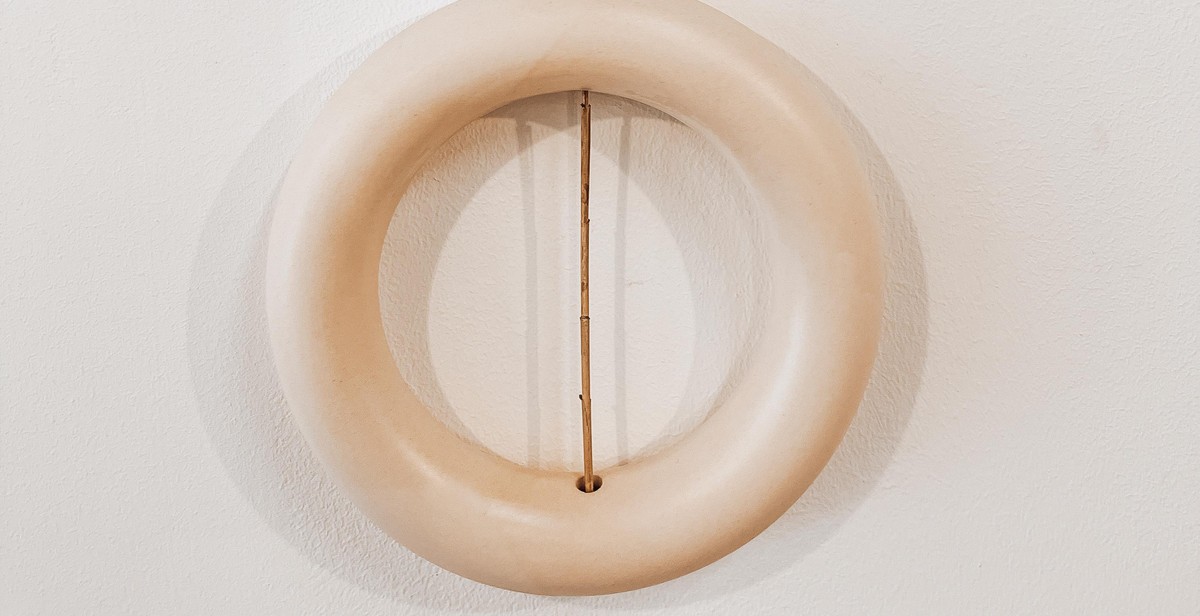How to Play the Didgeridoo: Beginner’s Guide to Circular Breathing and Tones
The didgeridoo is a traditional musical instrument of the Indigenous Australians, which has gained popularity all over the world. It is a long, narrow wooden tube, usually made from eucalyptus wood, and is played by blowing air through it while simultaneously using circular breathing techniques to create a continuous sound. It is believed to have been used for thousands of years in Indigenous Australian culture, and is often used in ceremonies and rituals.
Playing the didgeridoo is not only a great way to connect with Indigenous Australian culture, but it is also a fun and rewarding hobby. However, learning to play the didgeridoo can be challenging, especially for beginners. This guide will provide you with all the information you need to get started, including how to create different tones, circular breathing techniques, and tips for practicing.
Creating Tones
One of the most unique aspects of the didgeridoo is the ability to create a wide range of tones and sounds. There are three basic tones that can be produced:
- The drone tone, which is the continuous sound produced by blowing air through the didgeridoo.
- The toot tone, which is a higher-pitched sound produced by using your tongue to vibrate the column of air inside the instrument.
- The growl tone, which is a low, guttural sound produced by vibrating your vocal cords while blowing air through the didgeridoo.
Circular Breathing Technique
Circular breathing is the technique used to create a continuous sound on the didgeridoo. It involves inhaling through your nose while simultaneously pushing air out of your mouth, using the air stored in your cheeks to maintain the sound. Here’s how to do it:
- Inhale deeply through your nose.
- Blow a small amount of air into the didgeridoo.
- Close your lips and push air out of your cheeks to maintain the sound.
- Inhale through your nose while still pushing air out of your cheeks.
- Repeat the process, keeping the sound continuous.
Practicing Tips
As with any new skill, learning to play the didgeridoo takes time and practice. Here are a few tips to help you improve:
- Start with short practice sessions and gradually increase the length of time you play.
- Focus on creating a clear, steady drone tone before moving on to other techniques.
- Record yourself playing and listen back to identify areas for improvement.
- Experiment with different mouth and tongue positions to create different tones and sounds.

What is a Didgeridoo?
A didgeridoo is a wind instrument that originated from the Indigenous Australians. It is a long, cylindrical tube that is typically made from eucalyptus wood, although other materials such as bamboo, agave, and even PVC pipes can be used to create the instrument.
History of the Didgeridoo
The exact origins of the didgeridoo are not known, but it is believed to have been created by the Indigenous Australians around 1,500 years ago. The instrument was traditionally played by the men of the Aboriginal communities during ceremonies and celebrations, and was also used for communication between tribes.
Over time, the didgeridoo has become a popular instrument around the world, and is now played by musicians of all backgrounds and cultures.
Materials Used to Make a Didgeridoo
Eucalyptus wood is the most common material used to make a didgeridoo, as it is readily available in Australia and is durable enough to withstand the intense vibrations created by playing the instrument. However, other materials such as bamboo, agave, and PVC pipes can also be used to create a didgeridoo.
The type of wood or material used can affect the sound of the instrument, as well as its weight and overall appearance. Some didgeridoos are decorated with intricate designs and patterns, while others have a more natural, rustic look.
| Common Materials Used to Make a Didgeridoo | Pros | Cons |
|---|---|---|
| Eucalyptus Wood | Durable, produces a rich, deep sound | Can be expensive, difficult to find outside of Australia |
| Bamboo | Lightweight, affordable, easy to find | Produces a brighter sound, may not be as durable as other materials |
| Agave | Produces a warm, mellow sound | Can be difficult to find, may be expensive |
| PVC Pipe | Easy to find, affordable, customizable | Produces a less natural sound, may not be as durable as other materials |
Overall, the materials used to make a didgeridoo can have a significant impact on the sound and quality of the instrument. It is important to choose a material that suits your playing style and preferences, as well as your budget.

Getting Started with the Didgeridoo
The didgeridoo is an ancient wind instrument that originated in Australia and is known for its unique sound. It is relatively easy to learn, but it requires patience and practice to master. Here are some tips for getting started:
Choosing the Right Didgeridoo
When choosing a didgeridoo, it is important to consider the material, length, and shape of the instrument. Traditionally, didgeridoos are made from eucalyptus wood, but they can also be made from bamboo, PVC pipe, or other materials. The length of the didgeridoo will determine the pitch of the instrument, and the shape will affect the quality of the sound. It is recommended that beginners start with a shorter didgeridoo, around 3-4 feet in length, as it will be easier to play and control.
Holding the Didgeridoo
Hold the didgeridoo vertically with the larger end on the ground and the smaller end at your mouth. Rest the didgeridoo against your shoulder and use your non-dominant hand to support the instrument. Your dominant hand will be used to create the different tones.
Breathing Techniques
The most important technique to master when playing the didgeridoo is circular breathing. This involves inhaling through your nose while simultaneously exhaling from your mouth into the didgeridoo, creating a continuous sound. To practice this technique, try inhaling deeply and exhaling forcefully through your mouth while keeping your cheeks puffed out. Once you have mastered circular breathing, you can experiment with different tongue and lip movements to create different tones and sounds.
With these tips in mind, you are ready to start playing the didgeridoo. Remember to practice regularly and be patient with yourself as you develop your skills.

Circular Breathing: The Key to Playing the Didgeridoo
Circular breathing is the technique used to play the didgeridoo continuously without stopping to take a breath. It involves inhaling through the nose while simultaneously pushing air out of the mouth using the cheeks and tongue. This allows the player to maintain a constant flow of air and create the characteristic drone sound of the didgeridoo.
How to Practice Circular Breathing
Learning circular breathing can be a challenging process, but with patience and practice, it can be mastered. Here are some steps to help you get started:
- Start by practicing breathing in and out of your cheeks. Fill your cheeks with air and then slowly release it while keeping your mouth closed.
- Next, practice inhaling through your nose while simultaneously releasing air from your cheeks. Focus on keeping the air flow constant.
- Once you feel comfortable with step 2, try incorporating the didgeridoo. Play a note on the didgeridoo and then fill your cheeks with air while inhaling through your nose. Release the air from your cheeks while maintaining the note on the didgeridoo.
- Repeat step 3 until you can maintain a constant flow of air and play the didgeridoo continuously without stopping to take a breath.
Remember to take breaks and not get discouraged if it takes some time to master circular breathing. With consistent practice, you will be able to play the didgeridoo like a pro!

Producing Tones on the Didgeridoo
Producing different tones and sounds on the didgeridoo requires mastering different mouth shapes and techniques. The didgeridoo is a versatile instrument capable of producing a range of sounds, from deep resonant drones to sharp percussive notes.
Mouth Shapes and Techniques
The most basic technique for producing a sound on the didgeridoo is to blow air through your lips while using your tongue to create a vibration. This is known as the “drone” sound, and it is the foundation for all other sounds on the didgeridoo.
Once you have mastered the drone sound, you can experiment with different mouth shapes and techniques to produce other sounds. For example:
- Using your tongue to create a “fluttering” effect, similar to the sound of a horse’s hooves.
- Using your lips to create a “buzzing” or “raspberry” sound.
- Using your cheeks to create a “popping” or “clicking” sound.
With practice, you can combine these techniques to create complex rhythms and melodies on the didgeridoo.
Different Tones and Sounds
There are several different tones and sounds that you can produce on the didgeridoo, including:
| Tone/ Sound | Description |
|---|---|
| Drone | The foundational sound of the didgeridoo, produced by blowing air through your lips while using your tongue to create a vibration. |
| Flutter | A “fluttering” sound created by using your tongue to vibrate the air as it exits your mouth. |
| Buzz | A “buzzing” or “raspberry” sound created by using your lips to vibrate the air as it exits your mouth. |
| Pop | A “popping” or “clicking” sound created by using your cheeks to stop and start the flow of air. |
Experiment with different mouth shapes and techniques to create your own unique sounds on the didgeridoo. With practice and patience, you can become a master of this ancient and beautiful instrument.

Advanced Techniques for Playing the Didgeridoo
Adding Vibrations and Rhythms
Once you’ve mastered the basics of circular breathing and creating different tones, it’s time to add some vibrational and rhythmic elements to your playing. This will not only make your playing more interesting and dynamic, but it will also allow you to better connect with the instrument and create a deeper, more meditative experience.
One way to add vibrations to your playing is by using your vocal cords to create a buzzing or humming sound while playing. This technique is called “vocalizing” and involves making a humming sound in the back of your throat while blowing into the didgeridoo. This creates a unique, buzzing sound that adds texture and depth to your playing.
Rhythmic playing is another advanced technique that involves using your tongue and lips to create percussive sounds while playing. By tapping your tongue against the roof of your mouth or using your lips to create a popping sound, you can create a rhythmic beat that adds energy and drive to your playing.
Playing with Others
Playing the didgeridoo with others is a great way to expand your skills and create a more immersive musical experience. When playing with others, it’s important to listen carefully to the other players and adjust your playing accordingly. This means paying attention to the rhythm, tone, and volume of the other players and finding ways to complement their playing.
One way to enhance your playing when playing with others is by using call-and-response techniques. This involves playing a short riff or sequence of notes and then waiting for another player to respond with their own riff. This back-and-forth exchange creates a dynamic and engaging musical conversation between players.
Another way to play with others is by creating a “didgeridoo circle” where each player takes turns playing a solo while the other players provide a rhythmic accompaniment. This allows each player to showcase their unique playing style and creates a collaborative, improvisational musical experience.

Conclusion
Learning how to play the didgeridoo can be a fun and rewarding experience. With patience, practice, and dedication, anyone can master the art of circular breathing and create beautiful tones.
Remember to start with the basics, such as the drone and the toot, and gradually progress to more advanced techniques like the growl and the flutter tongue. It’s important to take breaks and rest your lips and lungs when needed, as playing the didgeridoo can be physically demanding.
Additionally, investing in a quality instrument and seeking guidance from experienced players can greatly enhance your learning experience. Attending workshops or joining a didgeridoo community can also provide opportunities to learn and grow as a player.
Lastly, have fun and enjoy the process of learning. The didgeridoo has a rich cultural history and playing it can be a way to connect with indigenous cultures and traditions. So, take your time, be patient, and let the music flow.
- Start with the basics and progress gradually
- Invest in a quality instrument and seek guidance from experienced players
- Take breaks and rest your lips and lungs when needed
- Have fun and enjoy the process of learning
| Benefits | Considerations |
|---|---|
| Improves respiratory health | Can be physically demanding |
| Connects you with indigenous cultures and traditions | Requires patience and practice |
| Enhances musical abilities and creativity | May require investment in a quality instrument |
